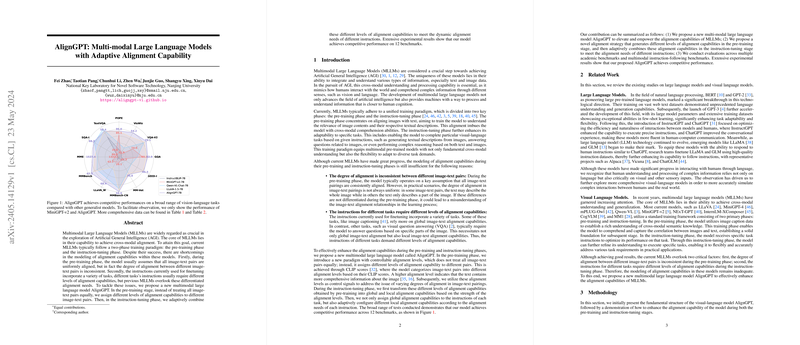AlignGPT: Fine-Tuning Alignment for Vision-LLMs
Introduction
Hey there, data science enthusiasts! Today, let's dive into an intriguing development in the world of Multimodal LLMs (MLLMs) known as AlignGPT. We're all aware of how LLMs have carved out a niche in NLP. But imagine combining those capabilities with visual data – that’s where MLLMs come in, bridging the gap between text and images. AlignGPT aims to address some persistent hiccups in this fusion by focusing on fine-tuning the alignment of image-text pairs.
So, what's the big deal about alignment, you ask? Well, mixing text and images isn't as straightforward as it sounds. First, not all image-text pairs align uniformly – some texts describe the whole image, while others only mention a part. Secondly, different tasks need different levels of alignment capabilities. For example, image captioning needs a complete understanding of the image, whereas Visual Question Answering (VQA) might require pinpointing specific details.
Aligning the AlignGPT
The brains behind AlignGPT decided to get smart about these alignment issues during two crucial phases: the pre-training phase and the instruction-tuning phase.
During Pre-Training
In traditional models, all image-text pairs are treated equally, but that’s not practical since the degree of alignment varies. AlignGPT tackles this by categorizing image-text pairs into different alignment levels using CLIP scores, which measure how well images and texts match.
Here’s how it works:
- Compute CLIP Scores: These scores rank image-text pairs by their alignment.
- Categorize Pairs: Using a bucketing technique, pairs are divided into different alignment levels.
- Assign Alignment Vectors: These vectors act as special tokens placed before image and text tokens to inform the model about the alignment level.
During Instruction-Tuning
Tasks like image captioning and VQA need different alignment capabilities. Hence, AlignGPT dynamically adjusts alignment levels to match the needs of each specific task. The key here is the combination of global (whole image) and local (part of the image) alignment vectors.
- Global Alignment: Acts as a foundation as the model needs a comprehensive understanding of the image.
- Local Alignment: Provides the model with precise focus, dynamically adjusted via a gate network depending on the task.
Experimental Insights
The research team put AlignGPT through its paces using an array of benchmarks to test its performance compared to other MLLMs like MiniGPT-4 and LLaVA-1.5.
Visual Question Answering (VQA)
On platforms such as VQA and GQA, AlignGPT showed competitive results, even outperforming some models with larger parameter sizes. This goes to show that AlignGPT’s strategy of differentiated alignment capability is yielding results.
Instruction-Following Benchmarks
AlignGPT also demonstrated its robustness across several multi-modal instruction-following benchmarks, cementing its status as a versatile and reliable model.
Implications and Looking Ahead
AlignGPT's nuanced approach to alignment has some notable implications:
- Enhanced Accuracy: Fine-tuning based on alignment levels can improve accuracy in various vision-language tasks.
- Flexibility: Dynamic adjustment in alignment capabilities means models can better tailor their responses to specific tasks.
- Efficiency: Achieving competitive performance even with smaller datasets hints at potential efficiency gains.
Moving forward, this intelligent alignment strategy opens doors for models that are not just better at understanding combined text and image data, but also more efficient in doing so. Integrating even more diverse data types, such as video or audio, could take this blend of modalities to new heights.
Conclusion
AlignGPT takes a significant step in refining the alignment process within MLLMs, ensuring that these models are more adept at handling the intricacies of vision-language tasks. With its dynamic and adaptive approach, AlignGPT sets the stage for future developments that promise even more sophisticated interactions between visual and textual information. So, let’s keep an eye out for how this evolves - the journey of multimodal models is just getting started!
